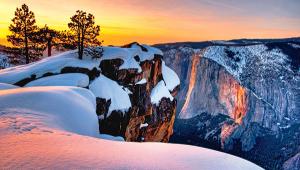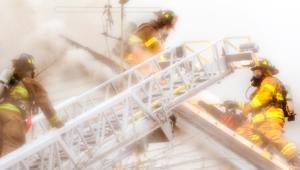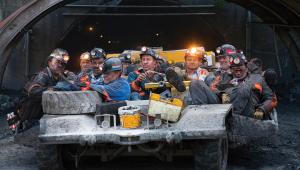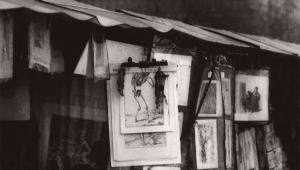A Book In The Making In Wyoming: A Photo Story Of Three Ranches

All Photos © Will & Deni McIntyre
The A Bar A and two neighboring cattle ranches are owned by the Gates family. Charlie Gates was in his 80s when the McIntyres met him. His father founded Gates Rubber Company, which supplied tires and fan belts for Ford cars. Charlie, who died a few years ago, was an aviator in his youth and eventually bought the Lear Jet Corporation that became Gates Learjet. Literally, he fell for Wyoming from the air.

The extended Gates family now owns the A Bar A and two adjacent working cattle ranches, Big Creek and State Line. The three ranches comprise nearly 100,000 acres. Today the Gates family is numerous and widely spread, so in 2011 the three ranch managers approached Charlie’s daughter, Diane, with a proposal to document and showcase the ranches in a photo book. They hoped this project would showcase the ranches’ unique assets and challenges for younger Gates family members as well as the public. Because the McIntyres had photographed at the A Bar A, and produced books the family liked, Will and Deni were chosen to visually tie the three ranches together in words and pictures.


Deni and Will relate how they went about illustrating activities and features of three widespread ranches. According to Will, “The cattle ranch year is based around calving (often in the snow) in April; branding and vaccinating, and moving stock to high pastures to take advantage of the snow melt in June; haying in August; gathering, weaning, and shipping in November; and doing whatever it takes to survive in midwinter. When we started this project, we planned five trips, but left some wiggle room for additional opportunities if necessary.”
An important aspect of the work was the ability to photograph the cowboys at work. Deni said, “We definitely needed the cooperation of the working cowboys, and we didn’t take it for granted. Some are third-generation cowboys who think anyone from east of the Mississippi smells like Washington, D.C.—their least favorite scent! They didn’t want to be portrayed in cartoon fashion, and they had to decide they could trust us.”


The logistics of the sheer size of the ground they had to cover also presented a challenge. Will said, “We used ranch pickups, hiked, and traveled on horseback. We learned to ride for a 1992 shoot in Egypt, and since then we’ve owned horses in North Carolina. We also chartered a plane out of Rawlins to shoot aerials. Thanks to Charlie Gates, the A Bar A has a very nice landing strip.”
The book will also include historical pictures of the ranch that the couple researched from old publications as well as ranch albums. Early photographers in the region left an archive of great old photographs to the historical museum in Encampment, the nearest town to the ranches. Mark Dunning, Big Creek ranch manager, is on the museum board. That was an unexpected benefit for them.
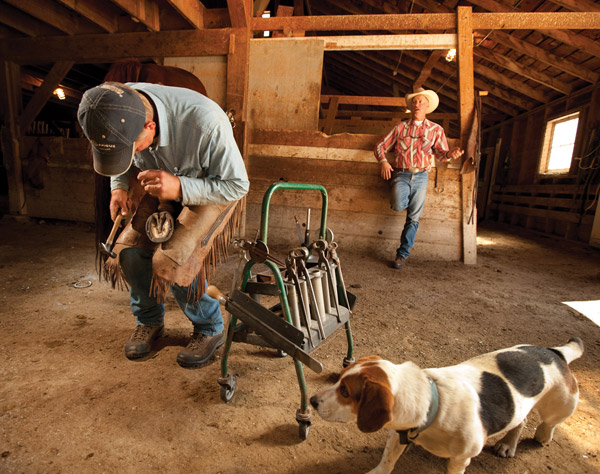
But photographing in rough country had its challenges. Will relates some of the difficulties: “Altitude can be a challenge when you’re carrying lots of gear. The ranches are at 7400 feet and go up to 12,000 feet, which can be chilly in summer, and it’s always windy. Getting into position when skittish cattle are moving over huge areas, you have to be careful not to spook them. There’s also mud, dust, snow, and extreme wind chill. We also photographed from horseback to get a cowboy’s point of view, and when it was the best way to keep up with action.”
Part of the story of a working ranch includes the work of branding and vaccinations. Deni said, “Branding is one of the major events of the ranch year. The cowboys round up about a hundred cows and calves at a time. They rope the calves and take them outside the pen to a team of waiting wranglers who brand and vaccinate and castrate them. It all happens very quickly, and in a few minutes the calves are back on their feet, bleating for their mothers.”
Other activities they documented were a cattle drive and haying. In early summer the cowboys take the cattle to high pastures. The couple drove a parallel route as far as they could, then hiked to vantage points. Their long lenses certainly came in handy on those days.
To cover all the events and moments of ranching life the McIntyres worked with several Canon EOS-1Ds Mark IIIs, which they described as a “sturdy camera,” along with a complement of EF lenses, including a 15mm f/2.8 fisheye, 16-35mm f/2.8, 24-70mm f/2.8, 70-200mm f/2.8, 100mm f/2.8 macro, 300mm f/2.8, and 500mm f/4. For aerials they used Kenyon KS-4 Gyro Stabilizers. They carried their gear in a large backpack that converts into a wheeled case. Long lenses have their own cases with shoulder straps or handles.

To design their book, entitled Three Ranches, they will draw upon their experience with past projects. Deni said, “We did a photo book titled All Over the Map: Travel Photographs & the Stories Behind Them, and our ranches client liked it a lot, so it was a model for Three Ranches. In addition to original text we will supply, we draw from correspondence by the ranches’ past owners and managers over the past 100 years, plus old newspaper stories and articles by noted western writers. Three Ranches will have great text as well as our very best photos.”
Three Ranches was published in October by Loose Ends Press. It will be for sale to the public online and through booksellers. For more information, visit Will and Deni McIntyre’s website at: macfoto.com. Or visit the ranch website at: abararanch.com.
- Log in or register to post comments



